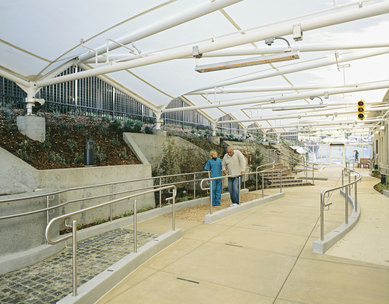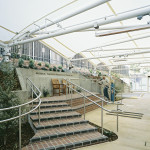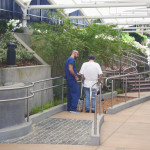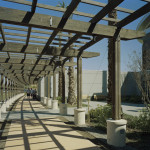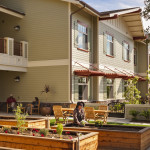Tackling New Terrain
We all have hurdles we have to overcome in life. Some are small and easy to maneuver around. Others are quite large, overwhelming and need some time and training to conquer. For the general population, we take the surfaces we walk on each day and our ability to get from one location to another for granted: it’s simply the ground beneath our feet. But for rehabilitation patients, many of whom have undergone a complete 180-degree change in the way they live daily life, each surface has now become an obstacle course.
Within the safe walls of the hospital, rehabilitation patients work to regain strength in the comforting hands of the ‘anything is possible’ staff members. Many of these activities are necessary to stabilize their medical conditions and address their wound care, but many involve teaching patients how to take care of themselves again. Relearning these “activities of daily living” gives them with the ability to adapt to their new condition, and restore what has been taken away.
But what happens when a patient is discharged from the safety of the hospital and hands-on care? How do patients learn to adapt to the external conditions they will face when they leave the hospital? Often, by extending the care beyond the walls and into the landscape; more specifically, into terrain parks and agility courses designed to both challenge and aid patients in the transition to independence.
Typically, terrain parks are found in four categories: agility parks, surface courses, respite gardens, and horticulture gardens. Some facilities have a sports area that may include a putting green or basketball net.
Agility parks: The simple act of stepping up onto a curb, an action that the able-bodied do without even thinking, is now a complex operation. The agility courses at rehab facilities provide an arena to practice maneuvering obstacles until they become second nature again. Some examples of the obstacles built into agility parks are:
- Raised platforms at least 6’ square and multiple small height increments (2”, 4”, etc.)
- Speed bumps
- Ramps – some that are very gradual as well as some that are steep
- Stairs – a set with typical treads and one with longer treads
- Handrails
- Areas that simulate street intersections, which allow patients to work on public transportation thresholds
Surface courses: As a kid, I used to chase my brother and his friends down our gravel driveway. As you can imagine, that led to many bandaged knees. I also grew up on the beach and spent hours playing in the sand. But what I never realized was that not everyone could feel these different surfaces under their feet, and how that impacts balance and agility. The surface courses allow the staff to work one-on-one with a patient as they navigate small patches of different materials, such as cobblestone, turf, sand, brick pavers, concrete, and tire shreds. These can vary based on the local terrain and surfaces that are prevalent in each region.
Respite gardens: Although terrain parks have a clear physical therapy function, designers shouldn’t forget the healing aspects of vegetation, water, and other natural features. While patients are hard at work during most of their time in the garden, taking that moment to relax complements their hard work. Knee walls with handrails and benches with grab bars allow patients, especially those using walking devices, to sit down to embrace the gardens, and then help them to stand.
Horticulture gardens: Ever wonder what it would be like to plant or tend a garden without being able to kneel on the ground? In the therapy gardens,
planter boxes designed at varying heights give the patients the freedom to work with nature. The raised planters typically offer a side approach (for wheelchairs and walking aids) and front approach for shallow, fully accessible boxes for annual flowers and a side approach for larger planters for plants with deeper roots.
Multi-step tasks such as gardening allow therapists to evaluate and challenge each patient cognitively and psychosocially as part of the rehabilitation program.
Richard Bookwalter, MS, OTR
Lessons on the Landscape, Advance Healthcare Network for Physical Therapy & Rehab Medicine
This year marks the 25th anniversary of the landmark Americans with Disabilities Act. The ADA had a tremendous impact on the design industry, teaching us to look at how people of differing abilities and senses experience and navigate space. But we will never be able to remove every obstacle.
Terrain parks achieve a two-part goal: overcoming the physical and psychological challenge of facing life outside the hospital walls. They are the perfect framework for patients to tackle these challenges in a safe environment, with emergency call systems, security systems, and a staff member by their side. And there are any number of small details that can shape their success.
I once had a patient tell me, “It’s all about how you chose to live your life.” This nicely exemplifies the patients and the staff members that work in rehabilitation facilities. Their ‘can do’ attitude makes designing these challenging landscapes worthwhile.
